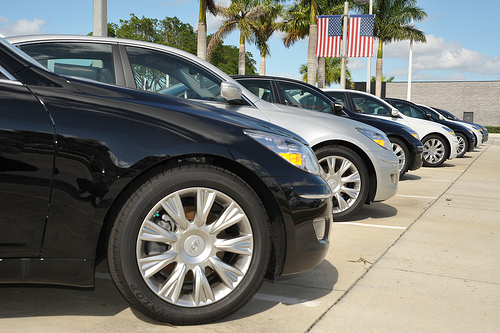I have been spending more than my share of time with salesmen these days, and I’ve realized that I have a lot to learn from them. I learned something today as well, or rather saw a technique in action – which I had read about earlier. I accompanied a friend who wanted to buy a mattress, and he had a certain price range in mind.
We went to a nearby store, and the salesman told us something about how the mattresses were color coded and left us alone for about ten minutes or so. I don’t remember the color coding exactly, but I think the firm ones had a red band on them, soft ones had a green band on them, and then the in-between ones had a yellow band on them.

After a few minutes, he approached us and told us about this fancy machine they had which was attached to a mattress that made recommendations for you based on your body type.
He asked my friend to lie down on the mattress for about a couple of minutes or so, and the mattress was attached to a screen which showed his posture, and how different points in his body were exerting pressure on it. The salesman told us how the machine was connected to databases of leading universities doing sleep research, and had over 4 million records in its database.
After a few moments, the system made a recommendation and the mattress that it recommended was about ten times the price of what my friend was looking at!
The salesman asked him to lie down on the mattress and see how it feels. Sure enough, it felt great, and then the salesman started explaining how each body is different, and needs different types of mattresses. He asked my friend to lie on another expensive mattress and told him he wouldn’t like it, and that turned out to be true too.
Finally, my friend told him that this is all well and good, but he wants something that is way cheaper than what was being shown, and told him the top price he was looking at.
The sales-guy said that you really don’t have to buy this one – we just use this to run diagnostics, and based on its recommendation – I will get you something that is closer to your price range. He then showed us a few that were closer to the top price – some less, and some more than it.
After trying out a few – my friend picked out one that was much higher than the top price he was looking at, even when there were cheaper options that weren’t so bad.
As I thought about his experience on the ride back home, I realized that I had read about this technique somewhere, most probably in this book called Influence, but I am not really sure about it. What happened was that the sales-man showed us a top of the line thing, which then set an anchor price in our head, which was quite a big amount. He didn’t actually talk about the price even once, but I am sure this amount was playing in our heads the entire time.
So now instead of the original budgeted price, this new figure which is much larger becomes a point of reference. So, when you look at other options, you start thinking about them with respect to the most expensive thing you saw, not the amount you originally had in your head. So, even something that is way higher than your top price doesn’t look all that bad, because it is so much less than the new anchor price in your head.
I thought this was quite an interesting experience, and a very effective technique as well. I’d like to hear if anyone else has any similar experience or other interesting stories about sales techniques.
Image by Heather

